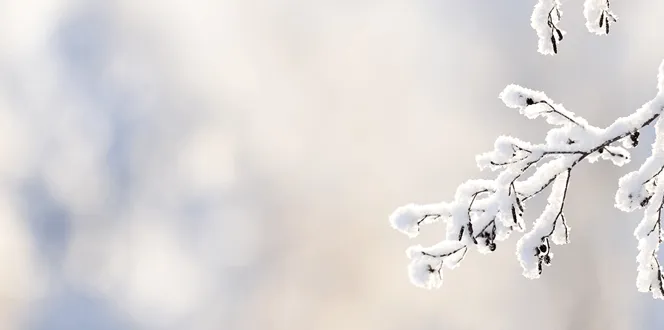From foot deep white blankets to delicate flurries, we know the drill after any snowstorm: spread winter salt to avoid icy mishaps.
It’s a quick fix to keep us safe, but rock salt can leave our trees vulnerable to damage.
Know the signs and treatment of rock salt damage to save your trees from harm.
What are the signs of rock salt damage on trees?
Salts accumulate in soils and cause damage by making it harder for trees to obtain water while also destroying soil structure which makes it harder for tree roots to grow and breathe.
Tree symptoms from rock salt damage vary based on the type of tree.
For evergreens, needles that turn a pale green or yellow color are a telling sign of damage. For deciduous trees, the symptoms are not so obvious. When snow has piled up near a tree, rock salt can seep into the tree’s roots and result in crusty dry soil, bark discoloration, yellowing leaves, or canopy dieback.
Once any of these symptoms are spotted, restoring tree health requires management from you and your local arborist.
Here’s how to protect trees from rock salt damage
- If you spread salt, choose one with calcium chloride, or better yet calcium magnesium acetate, which is less harmful to plants than salt composed of sodium chloride.
- Wash your trees with ample fresh water when the snow clears to rinse away salt on the trunk.
- Irrigate the soil around the tree thoroughly with an inch of fresh water at a time each week for the first two to three months of spring to flush out any remaining excessive salt.
- To prepare for salt impacts ahead of time, spread gypsum on the soil in late fall. Biochar and compost can also be incorporated into the soil to help with salt resilience.
- To help rid the tree is rid of lingering salt, your local arborist can also remediate it with liquid humates come spring.
What are the salt-tolerant trees in the northeast?
Common salt-tolerant trees include junipers such as Eastern redcedar, Mugo pine, Southern magnolia, longleaf pine, yellow birch, thornless honeylocust, Kentucky coffeetree, black walnut, sweet gum, white spruce, and Colorado blue spruce.
Across all regions, healthy, mature trees and trees with thick bark tend to withstand damage well. Trees that are stressed from storm damage, harmful insects, or disease infestation suffer more damage from rock salt.





